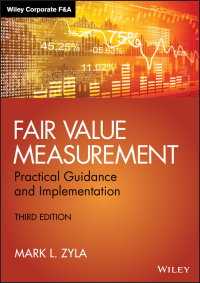Question
On January 2, Year 4, Brady Ltd., a private company, purchased 80% of the outstanding shares of Partridge Ltd. for $6,120,000. Partridges statement of financial
On January 2, Year 4, Brady Ltd., a private company, purchased 80% of the outstanding shares of Partridge Ltd. for $6,120,000. Partridges statement of financial position and the fair values of its identifiable assets and liabilities for that date were as follows:
| Carrying Amount | Fair Value | ||||
| Plant and equipment (net) | $ | 5,500,000 | $ | 5,500,000 | |
| Patents (net) | 2,000,000 | 2,700,000 | |||
| Inventory | 3,000,000 | 3,400,000 | |||
| Accounts receivable | 2,500,000 | 2,500,000 | |||
| Cash | 700,000 | 700,000 | |||
| $ | 13,700,000 | ||||
| Ordinary shares | $ | 2,201,000 | |||
| Retained earnings | 3,700,000 | ||||
| 10% bonds payable | 4,000,000 | 4,500,000 | |||
| Accounts payable | 3,799,000 | 3,799,000 | |||
| $ | 13,700,000 | ||||
The patents had a remaining useful life of ten years on the acquisition date.
The bonds were issued on January 1, Year 2, and mature on December 31, Year 13. Goodwill impairment losses were as follows:
- Year 4: $85,000
- Year 6: $67,500
Partridge declared and paid dividends of $145,000 in Year 6.
Brady uses ASPE for reporting purposes. It elected to use the straight-line method to amortize any premium or discount on bonds payable.
On December 31, Year 6, the financial statements of the two companies were as follows:
| STATEMENT OF FINANCIAL POSITION | |||||
| Brady | Partridge | ||||
| Plant and equipment (net) | $ | 10,000,000 | $ | 7,000,000 | |
| Patents (net) | 900,000 | ||||
| Investment in Partridge Ltd. (equity method) | 6,589,200 | ||||
| Inventory | 6,600,000 | 2,900,000 | |||
| Accounts receivable | 2,000,000 | 2,300,000 | |||
| Cash | 600,000 | 800,000 | |||
| $ | 25,789,200 | $ | 13,900,000 | ||
| Ordinary shares | $ | 6,000,000 | $ | 2,201,000 | |
| Retained earnings | 6,562,000 | 4,899,000 | |||
| Bonds payable | 5,000,000 | 4,000,000 | |||
| Accounts payable | 8,227,200 | 2,800,000 | |||
| $ | 25,789,200 | $ | 13,900,000 | ||
| INCOME STATEMENTS | |||||
| Brady | Partridge | ||||
| Sales | $ | 11,000,000 | $ | 6,000,000 | |
| Equity method income | 154,000 | ||||
| 11,154,000 | 6,000,000 | ||||
| Cost of goods purchased | 7,130,000 | 3,090,000 | |||
| Change in inventory | 90,000 | 210,000 | |||
| Depreciation expense | 1,100,000 | 420,000 | |||
| Patent amortization expense | 300,000 | ||||
| Interest expense | 580,000 | 400,000 | |||
| Other expenses | 880,000 | 1,050,000 | |||
| Income taxes | 800,000 | 250,000 | |||
| (10,580,000) | (5,720,000) | ||||
| Profit | $ | 574,000 | $ | 280,000 | |
Required:
(a) Prepare consolidated financial statements on December 31, Year 6. (Input all values as positive numbers.)
(b) Now assume that Brady uses the cost method to account for its investment in Partridge. Which items on Brady's separate-entity financial statements would have amounts different from those shown. Compute the cost method balances of these items.
(c) Calculate the current ratio, debt-to-equity ratio, and return on total shareholders equity for Bradys Year 6 financial statements assuming that the (Round your intermediate computations to nearest whole dollar value. Round current ratio and debt to equity ratio to 2 decimal places and return on equity to 1 decimal place.)
(i) Equity method was used to report its investment in Partridge;
| Equity | ||
| Current ratio | ||
| Debt-to-equity ratio | ||
| Return on equity | % | |
(ii) Cost method was used to report its investment in Partridge;
| Cost | ||
| Current ratio | ||
| Debt-to-equity ratio | ||
| Return on equity | % | |
(iii) Consolidated statements were used to report the business combination with Partridge.
| Consolidation | ||
| Current ratio | ||
| Debt-to-equity ratio | ||
| Return on equity | % | |
(d) Not available in Connect.
(e) Prepare the consolidated financial statements using the worksheet approach. (Input all amounts as positive values. For accounts where multiple adjusting entries are required, combine all debit entries into one amount and enter this amount in the debit column of the worksheet. Similarly, combine all credit entries into one amount and enter this amount in the credit column of the worksheet. Leave no cells blank - be certain to enter "0" wherever required. Omit $ sign in your response.)
Step by Step Solution
There are 3 Steps involved in it
Step: 1

Get Instant Access to Expert-Tailored Solutions
See step-by-step solutions with expert insights and AI powered tools for academic success
Step: 2

Step: 3

Ace Your Homework with AI
Get the answers you need in no time with our AI-driven, step-by-step assistance
Get Started


